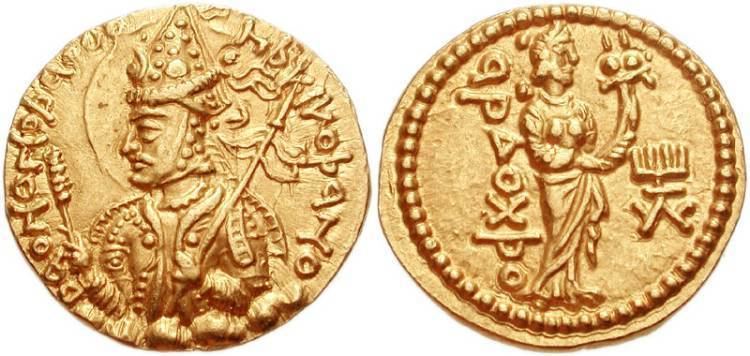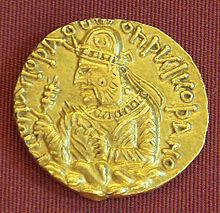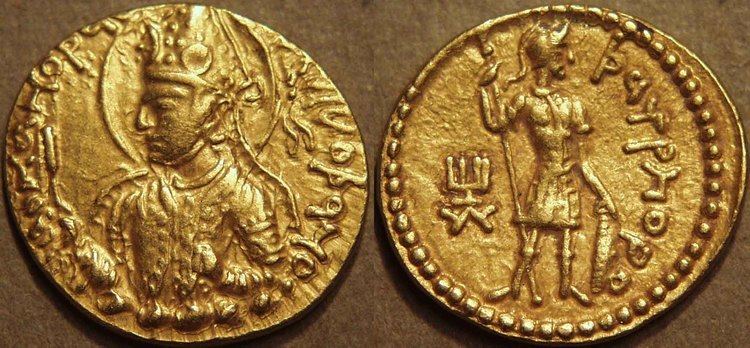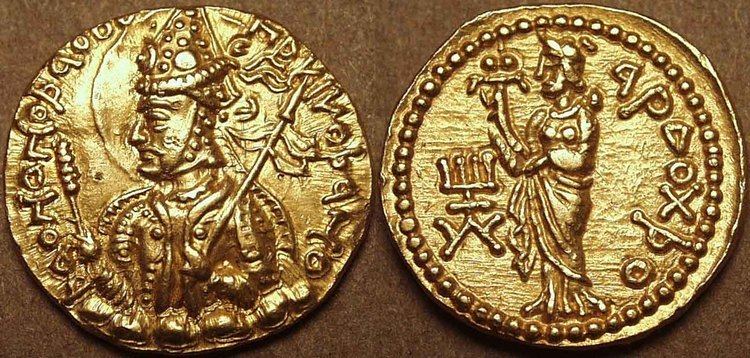Reign 140–180 CE Dynasty Kushan | Parents Kanishka | |
 | ||
Similar | ||
Huvishka (Kushan: Οοηϸκι, "Ooishki") was the emperor of the Kushan Empire from the death of Kanishka (assumed on the best evidence available to be in 140 CE) until the succession of Vasudeva I about forty years later. His rule was a period of retrenchment and consolidation for the Empire.
Contents

Religion

Huvishka was the son of Kanishka. His reign is also known as the golden age of Kushan rule. The statue is dated to "the 28th year of the reign of Huvishka", and dedicated to "Amitabha Buddha" by a family of merchants. There is little evidence that Huvishka himself was a follower of Mahāyāna Buddhism. A Sanskrit manuscript fragment in the Schøyen Collection describes Huvishka as one who has "set forth in the Mahāyāna."
Compared to his predecessor Kanishka, Huvishka was worshipper of Shiva.

He also incorporates in his coins for the first and unique time in Kushan coinage the Hellenistic-Egyptian Serapis (under the name Σαραπο, "Sarapo" ), and the Goddess Roma (thought to represent "Roma aeterna"), under the name "Riom" (Greek: ΡΙΟΜ).
Coinage

One of the great remaining puzzles of Huvishka's reign is the devaluation of his coinage. Early in his reign the copper coinage plunged in weight from a standard of 16g to about 10-11g. The quality and weight then continued to decline throughout the reign until at the start of the reign of Vasudeva the standard coin (a tetradrachm) weighed only 9g. The devaluation led to a massive production of imitations, and an economic demand for the older, pre-devaluation coins in the Gangetic valley. The king tried to destroy Indian economy by devaluation of Indian coins.
